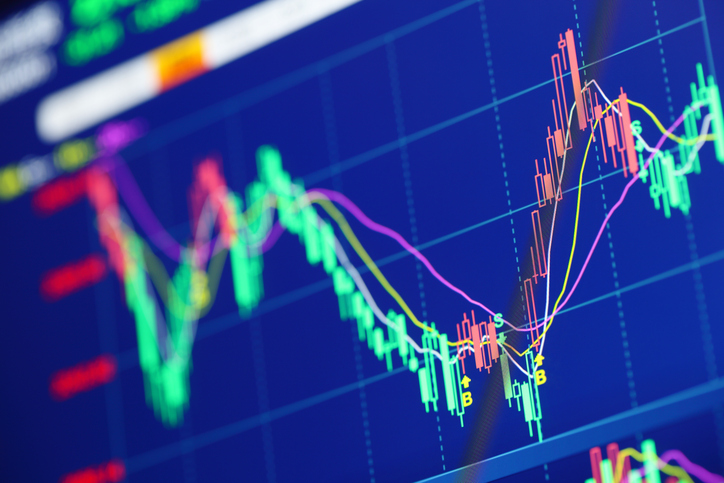Unfortunately for investors, Santa Claus didn’t bring a rally with him to end the year.
Stocks slumped in December after experiencing back-to-back positive months, closing out the worst year for broad equity markets since the 2008 financial crisis. Inline with trends that persisted throughout the year, the Nasdaq led the way lower with a loss of 8.73%. The S&P 500 and Dow Jones Industrial Average fared better, but still dropped 5.90% and 4.16% for the month.
As a whole, defensive sectors outperformed cyclical / sensitive sectors, which was another constant trend in 2022 as investors favored higher quality and stability. Consumer discretionary, technology, and communication services were the biggest laggards for the year while health care, consumer staples, and utilities were mostly flat when all was said and done.
International stocks moved lower for the month as well, but fared better than their US counterparts as developed international stocks lost 2.18% and emerging markets were down 2.23%. Companies overseas have lagged the US in recent years, but outperformed during Q4 2022 on continued optimism surrounding China’s economic reopening.
While the Fed reduced the pace of its rate hikes in December to 0.50%, which matched expectations, it hinted rates could remain a little higher for a little longer in 2023. This sent bond yields higher, leading to a loss of 0.45% for the US aggregate bond market. The loss caps the worst year in modern history for the bond market as aggregate US bonds finished the year down 13.01%.
Overall, 2022 was a tough year for investors with few places to hide. As we head into the new year, it’s important to stay focused on the bigger picture. Eventually the Fed will pause rate hikes as inflation subsides (which should help stabilize markets), and bonds are in a more attractive place today than they were a year ago. In the meantime, having a solid financial plan and investment strategy in place can help you weather the storm in the event last years volatility continues into the early part of 2023.
After a prolonged period of underperformance, it appears value has come back into style.
Growth stocks dominated markets from 2015 – 2021 as low interest rates created cheaper borrowing costs, supporting a higher appetite for taking risk. During this period, growth outperformed value by more than 2x.
However, as interest rates soared higher in 2022, combined with higher inflation and market uncertainty, value stocks held up relatively well while growth stocks came back down to earth.
Highlighting this divergence, the Russell 1000 Growth Index fell 29.14% compared to a loss of only 7.54% for the Russell 1000 Value Index, marking the largest margin of outperformance for value since 2000.
Looking ahead to 2023, the big question remains – when is the Fed going to pivot and possibly start cutting rates? Until this happens, many experts believe value will remain in favor.
Who says adults can’t have fun?
A recent report showed “kidults” (age 12+) represented 60% of the growth in the toy industry despite accounting for only one-fourth of total sales (though this share is on the rise).
This trend has been taking shape for years, but accelerated during the pandemic as people were stuck at home looking for new forms of entertainment.
While it started with board games and puzzles, the spending started to leak into other toy categories such as Legos.
Even McDonald’s jumped on the bandwagon and started selling adult happy meals, which provided a significant boost in traffic when released.
Wondering what’s behind the recent spending growth? Some experts believe nostalgia is driving “feel-good” purchases to offset the negative emotions from rising inflation and interest rates.
Broad Market Returns
| Asset Class | 1 Month | 3 Month | YTD | 1 Year |
| S&P 500 (VOO) | -5.73% | 7.53% | -18.17% | -18.17% |
| NASDAQ (QQQ) | -9.01% | -0.13% | -32.58% | -32.58% |
| Large Cap Growth (VUG) | -8.36% | -0.19% | -33.16% | -33.16% |
| Large Cap Value (VTV) | -3.30% | 14.52% | -2.09% | -2.09% |
| Small Cap Growth (VBK) | -6.31% | 3.01% | -28.44% | -28.44% |
| Small Cap Value (VBR) | -5.68% | 11.52% | -9.38% | -9.38% |
| Developed International (VEA) | -2.18% | 16.78% | -15.34% | -15.34% |
| Emerging Markets (VWO) | -2.23% | 8.57% | -17.98% | -17.98% |
| REITs (VNQ) | -5.03% | 4.33% | -26.25% | -26.25% |
| Aggregate Bonds (BND) | -0.81% | 1.64% | -13.11% | -13.11% |
| Corporate Bonds (VCIT) | -0.80% | 3.58% | -13.98% | -13.98% |
| High Yield Bonds (JNK) | -1.88% | 4.78% | -12.19% | -12.19% |
| Long Term Treasuries (VGLT) | -2.28% | -1.13% | -29.34% | -29.34% |
| International Bonds (BNDX) | -2.75% | 0.16% | -12.76% | -12.76% |
Market Health Indicator
The Market Health Indicator (MHI) measures market health on a scale of 0 – 100, analyzing various market segments such as economics, technicals, and volatility. Higher scores indicate healthier market conditions.

Fun Facts
- Google was originally named Backrub, but was shortly renamed as a play on the mathematical expression “googol” (the number 1 followed by 100 zeros).
- The Barbie doll’s full name is Barbara Millicent Roberts, and her birthday is March 9, 1959, when she was first displayed at the New York Toy Fair
- Jonathan the tortoise is the oldest-known living land animal. He was born in 1832 and just turned 190 years old in December.
- “Wordle” was the most searched term on Google in 2022.
– The Aspire Wealth Team


